“I have always been mindful of Edward Weston’s remark, ‘If I wait for something here I may lose something better over there.’ I have found that keeping on the move is generally more rewarding.”
— Ansel Adams
Sooner or later, every landscape photographer has to decide whether to stay put and hope that the light gets better, or move somewhere else.
Last Saturday morning, on the last day of my Hidden Yosemite workshop with The Ansel Adams Gallery, we rose early and drove to Tenaya Lake to capture the moon setting over the water. On our way there we noticed low-lying mist in Tuolumne Meadows. We photographed a beautiful moonset over the lake, but as soon as the moon dropped below the ridge we drove back to Tuolumne.
The mist was still there. First we ran out to a small pond to catch the sun lighting some small clouds above the high peaks to the east. Then we spotted a herd of deer off to the left in the mist, so we quickly changed lenses and photographed them until they moved away.
By then the sun was hitting Unicorn Peak, so we walked about a hundred feet north to get a reflection of the peak in the pond, and waited until the sun grazed across the foreground.
Then light started hitting the mist and trees behind us, so we moved again to get closer, and put the sun behind trees where we could see sunbeams and starbursts.
And then the sun rose higher, the mist disappeared, and the show was over. The whole sequence lasted about 40 minutes.
In this case, the light and fog were changing quickly, so we had to switch lenses and move our feet if we wanted to catch those fleeting moments. But three years ago, during the same workshop, a similar situation required waiting patiently for the light to change.
Again, we noticed fog in Tuolumne Meadows on our way to capture the moon setting over Tenaya Lake. After photographing the moonset we returned to Tuolumne, but on that occasion the fog was much thicker. We couldn’t see the sky above us, but the sun had to break through the fog eventually, so we waited.
There was more water that year, so we walked out to a large snowmelt pond in the meadow. Within about twenty minutes we started to see hints of light, then glimpses of distant peaks and ridges. Soon we were photographing a spectacular scene the with sun, fog, and mountains reflected in the pond.
On both of these occasions the decision about whether to stay or go seemed pretty obvious. Last Saturday we simply followed the light at the moment, and that led us from one spot to another. Three years ago there wasn’t much happening when we returned to Tuolumne, so we had to wait.
But these decisions are not always so easy. I wish I could give you a simple formula for deciding whether to stay or go, but there isn’t one. It helps to have some experience and knowledge of weather patterns, so you can take an educated guess about what the weather might do over the next five, ten, or thirty minutes.
Also, trust your instincts. In situations like these I sometimes get a strong feeling that I should move, or stay. I don’t think there’s anything mystical or psychic about this. It’s just the right side of my brain instantly analyzing all the available information – the weather, the wind, the time of day, the time of year, etc. – and reaching a conclusion long before the left side of my brain can slowly, painstakingly work through all the variables. Any time I’ve ignored that feeling I’ve regretted it, and every time I’ve listened it’s been right. We all know more than we think we do.
— Michael Frye
Related Posts: Courting Luck: How to Take Advantage of Special Light and Weather in Landscape Photography; Rainbow Weather
Did you like this article? Click here to subscribe to this blog and get every new post delivered right to your inbox!
Michael Frye is a professional photographer specializing in landscapes and nature. He is the author or principal photographer of The Photographer’s Guide to Yosemite, Yosemite Meditations, Yosemite Meditations for Women, and Digital Landscape Photography: In the Footsteps of Ansel Adams and the Great Masters. He has also written three eBooks: Light & Land: Landscapes in the Digital Darkroom, Exposure for Outdoor Photography, and Landscapes in Lightroom 5: The Essential Step-by-Step Guide. Michael written numerous magazine articles on the art and technique of photography, and his images have been published in over thirty countries around the world. Michael has lived either in or near Yosemite National Park since 1983, currently residing just outside the park in Mariposa, California.

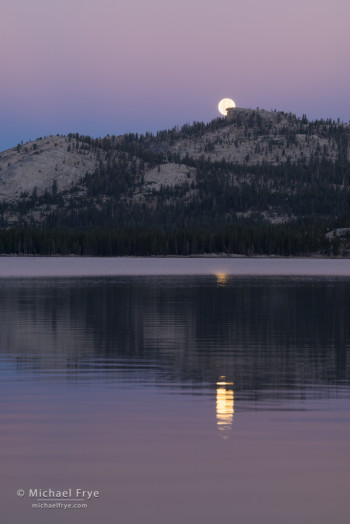
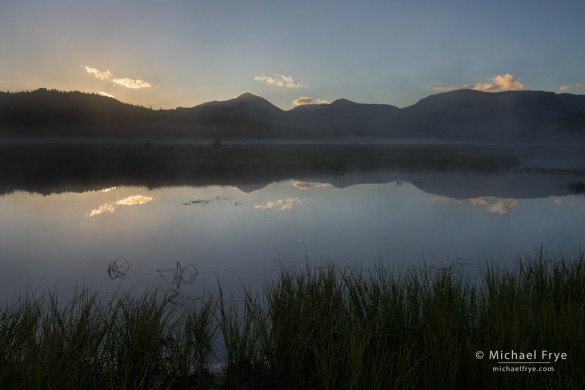
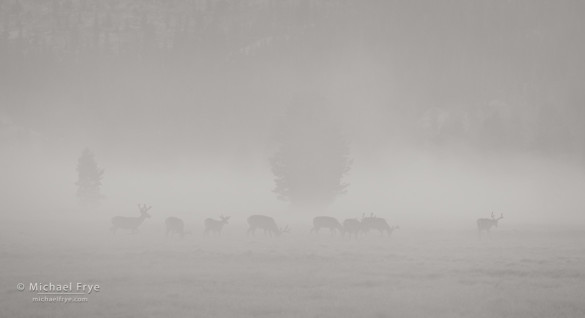
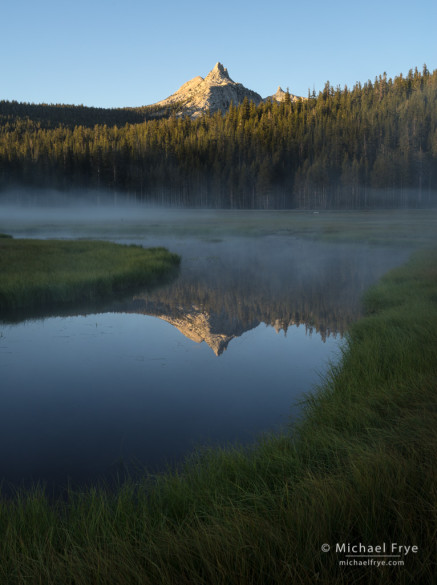
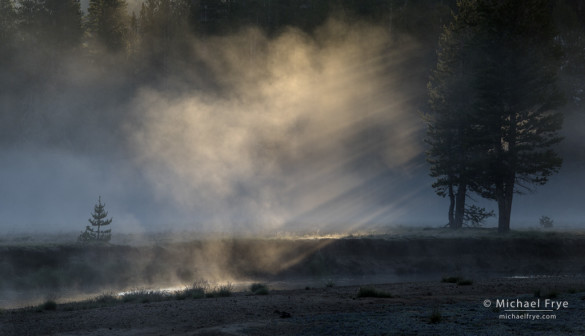
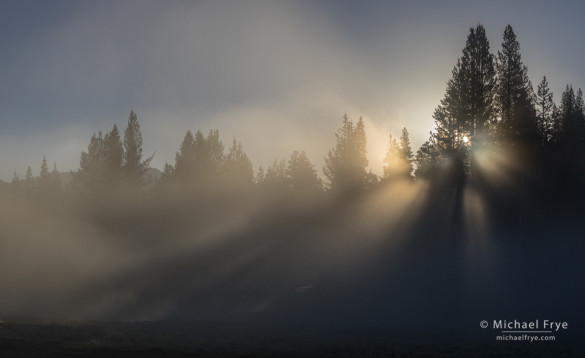
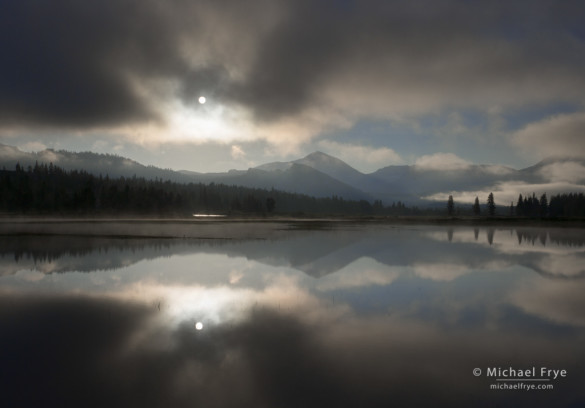








I so enjoy the beauty of your work. Thank you so much for your generosity in sharing!
Thank you Dena!
Thanks for the great article and beautiful photographs. It is so true. Stay or go is a frequent dilemma, especially when shooting at the beginning or end of the day. Sometimes the light can change so dramatically in a short period of time that people find it hard to believe that two photos were taken on the same day just a couple minutes apart.
You’re welcome Bev, and thanks for your comments. Indeed, the light can change very quickly!
Michael,
Beautiful. I like the last image best.
For me, I call this “situational awareness”. And I believe strongly in intuition. Once I waited at Olmstead Point in the rain and got some great shots at sunset when the rain stopped.
Thanks very much John. Glad to hear that someone else believes in intuition in situations like this. 🙂
Ditto what Dena says. These are all so absolutely Beautiful I can’t pick a favorite. Thank You for sharing.
Thanks Karen!
What a way to end the workshop. Fog and mist and sunbeams. What a combination. Great collection for 40 minutes. Sometimes you get lucky and get sunrise and moonset at the same time. With my luck, when I leave the sun breaks through the clouds etc. With experience, your odds increase. Thanks for sharing and making me want to go back again!
Thanks very much Karl – I’m glad you like these photos, and you should go back!
A very nice, diverse set of images captured in such a short span. I think the results are proof that moving around yields great opportunity for solid results! Coincidently, my last day on a workshop in Yosemite was on a pre-dawn hike to Tenaya Lake for sunrise. Just wished for clouds that day, though I found a small, bonsai-like pine at lake’s edge that made the whole trek worthwhile! Definitely heading back when time permits. Thank for the posts.
Thank you Ross, and yes, I think moving and following the light is usually more productive than staying put – but not always!
Michael, I think you actually are psychic.
Enjoyed the post, as always. Wish we could have been there.
Lol Larry. That crystal ball in my camera bag does weigh a lot.
Great article Michael, and a great 40 minutes it was.
The biggest challenge is to ignore the left side of the brain as it attempts to take control with rational (irrational) analysis of the situation. I’m bored, let’s get moving, find something else. No, relax, it will happen right here, You’re wrong, there’s noting going on. Stop that, be patient, we are in the right place…and on and on. Oh, the battles I wage within.
Jim, I’m afraid that internal conversation you describe is all too familiar. As you say, it’s better to ignore it! I think that’s true of most decisions in life, even outside of photography. When we “make a decision,” what’s happening is that our rational, logical, left brain is simply finding justification for something that another part of our brain already decided long beforehand.
Michael,
Excellent images and great use of light!
Being familiar with weather patterns and the intuition that comes with experience are of paramount importance but also knowing the areas that you are photographing is essential. A first time visitor to an area would not have that knowledge. This is another good reason to frequent places near where you live, study them well and become a local expert!
Thanks James, and you’re absolutely right, being familiar with a place and its weather patterns helps a great deal.
Great post, and great images, Michael!
The age-old question! Deciding to move is tough enough, but for me, I have a some issues with mobility. Moving across a fairly flat ground still takes me almost twice as long as a “normal” person. Knowing the area helps, as well as longer lenses!
Just yesterday morning I set up for a sunrise shot, but quickly saw that I needed to move. I decided to move and found a great “plan B’ location. In this case, I was familiar with the area, so I knew were to go. This time moving, even though I could have missed the “action”, it paid off (http://www.imagesinthebackcountry.com/blog/landscape/great-valley-grasslands/sunrise-at-the-grasslands/).
Mike, obviously the decision about whether to stay or move depends on a lot of factors, and your own mobility is certainly one of those. There have been plenty of times when I wished I could be “over there,” but “over there” was not near a road, and beyond my hiking ability, at least in the short time available.
Beautiful pictures as usual, Michael. The deer in the fog is magnificent – so simple but so evocative, as many great images are. I think this is a shot that many (such as I) would have missed, because they don’t have your eye to see it.
I reckon that on balance when I stay I fail to get any better images about 70% of the time. Does this mean that my internal meter is tipped too far toward “optimism”, and should be reset?!
I also believe that “stay-or-go” is ruled by some variation of Murphy’s Law along the lines of “At the moment a departing photographer reaches a point ‘t’ seconds away from a shoot, the sky will turn from grey to crimson for exactly ‘t-1’ seconds.” 🙂
Thanks Geoff – I’m glad you like the deer photo, as that’s my favorite of the group.
Your point about Murphy’s law is well taken… if you want to be pessimistic about these things. 🙂
Hi Michael,
Wonderful sequence, I particularly liked:
Fog and sunbeams, Tuolumne Meadows,Saturday morning, 6:20 a.m.
I was at the dentist today and they had one of your dogwood and Merced pictures hanging on the wall of the room I was in :-).
Doug
Thank you Doug, and it’s nice to know about where my prints have traveled. 🙂
Good article and great images to illustrate it! If only there were a single answer for all situations. 🙂 Most often, I do find it better to wait it out, but it’s certainly not written in stone by any means.
I would offer that it not only helps to know something of weather patterns, but to know something about those specific to the locale.
I was recently in NE Tennessee shooting with some G+ friends and we encountered a similar situation. When we arrived at the desired location for a sunset shoot, we were almost totally fogged in. And though I have *some* patience in such situations, I probably would have left early if not for one of my compatriots knowing the area and being confident the fog would break enough to get some decent shots. Turns out he was right. The one thing that differed in our case from what you describe here is that we were kinda stuck shooting from a ~20x20ft ‘deck’ of an overlook and the 180 degree view we had from it. There really wasn’t an option to move to other areas within a short hike.
Thanks RJ. The decision about whether to stay or go definitely depends on what other options are available, and how quickly or easily other possible spots could be reached. There are always a lot of variables, which makes formulaic answers impossible. Good thing your friend knew the weather patterns – or maybe he just got lucky!
In this case, my partner lived only about an hr drive away from the location, so he was fairly familiar with the weather patterns. But predicting weather always involves a little luck, no? Er, I mean there’s some ‘art’ mixed in with the science. 🙂
Interesting write up Michael, I’ve experienced many moments like these when you are all set up with a firm plan in your head only for the light not to materialise how you envisioned and having the tough choice to give up and move on to plan B or stay put. You really need to go with your gut feeling and the experience that you have built up from the numerous failed trips, there have been times when I’ve been stood on one hillside in low cloud only to see beautiful light on the hillside over the over side of the valley too far away to make the change in location – all makes up part of being a landscape photographer!
Thanks for your comments Nick. It certainly is all part of being a landscape photographer, and we’ve all experienced those moments when we realized we were in the wrong place, or when we got to the right place – but too late!